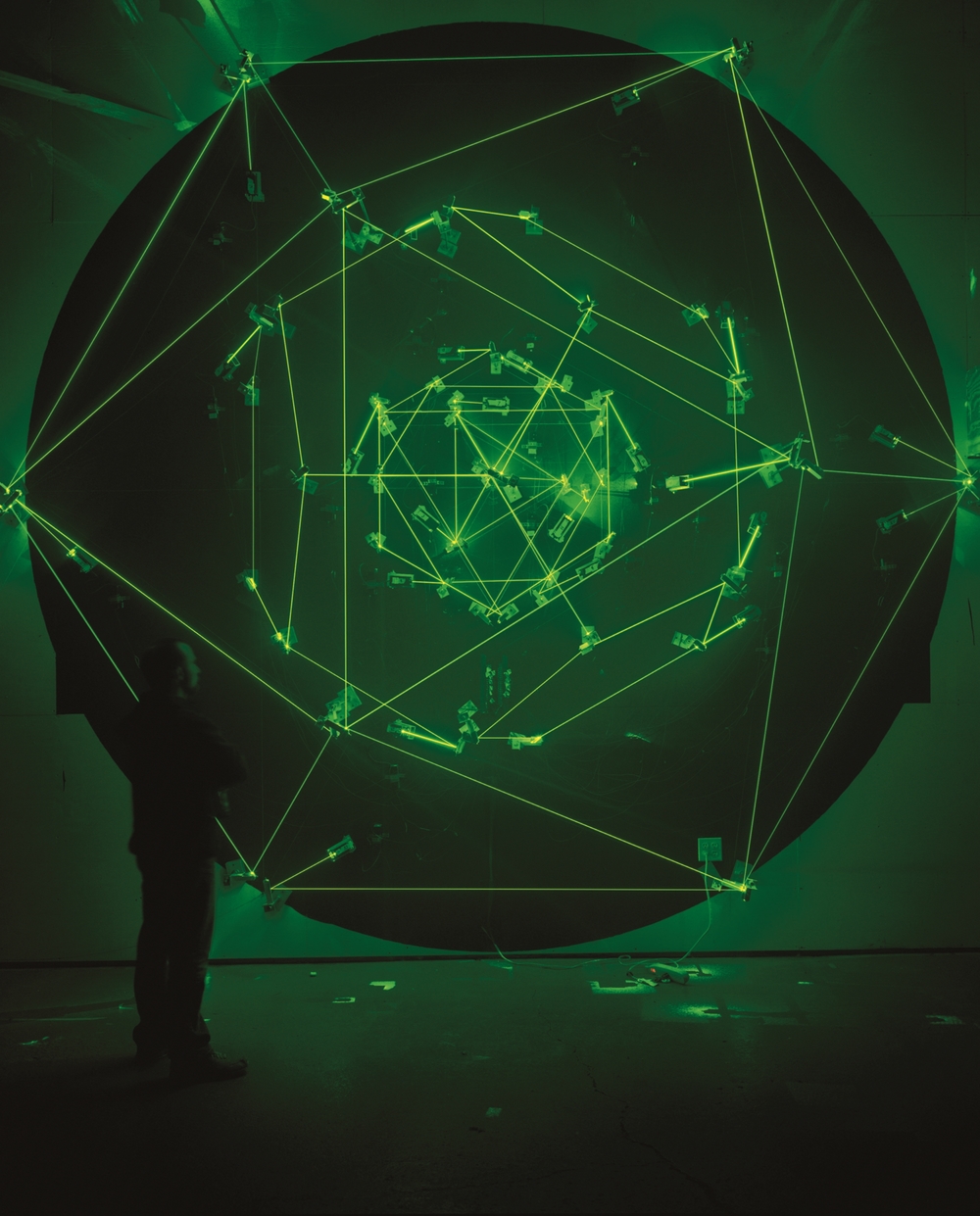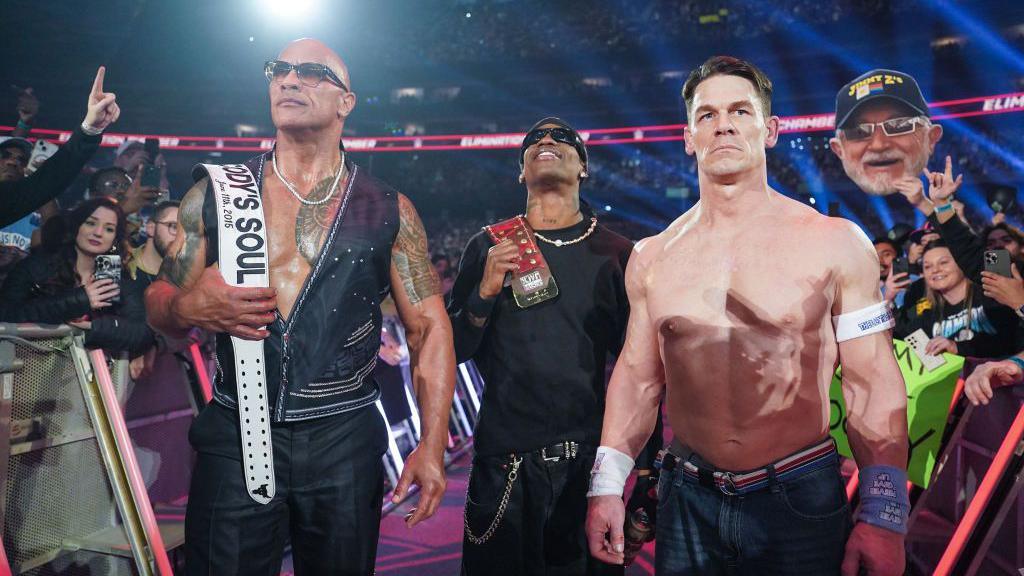This article is supported by Baron Samedi Spiced. In this series , Dark Arts, we profile artists who celebrate the night in their practice.
Matthew Schreiber built his first laser at seven years old, and his first installation at fifteen. With this kind of ambition it makes total sense that he’d go on to spend over a decade working with James Turrell.
Videos by VICE
Now in his fifties, Schreiber has an incredible catalogue of his own. Through light and dark, geometry and space, his work comments frankly on art’s spectacle and novelty. With lasers and holograms, he leans towards the occult: another youthful engagement that, like his other references, hits at a bygone era of pop culture curio.
His installations, which are huge, invite audiences deep inside his fun, weird, dark world. Sensations are jacked; you submit to your senses. The Brooklyn-based artist is bringing his biggest instal yet to Dark Mofo this year. We caught up with him ahead of his Australian trip.
VICE: Among things like colour and geometry, you work primarily with light and dark. What’s the most important of the two?
Matthew Schreiber: You have to use both to have either. So if I want a subject, like lasers, to appear bright, I need darkness around it. If I want a subject, like video, to appear dark, I need to prepare people with bright light before.

Do you work better at night, or find more inspiration in the nighttime?
I do most of my physical work during the day, but in my mind I am working all night.
Do you think the night or darkness holds any weird energy?
Definitely, darkness feels different. Visually, the lack of light makes colour and the texture of light different. Emotionally, nighttime and darkness feels special because it’s typically a time for sleep, so dark nights are closer to dreaming.
I especially like the parts of your work that deal with superstition. Do you have any yourself?
I had a lot of strange experiences in high school, in the US, that seemed real. Or maybe I just had a really vivid imagination.

Do you believe in the supernatural now?
I believe that as humans we can barely understand or perceive most of what surrounds us, so this belief in not knowing may be considering supernatural or metaphysical.
If you could, would you come back as a hologram after you die?
Sure.
And hex people?
Nope.
Where did your journey start—science or art?
It was a bit of both. First with an interest in lasers as a child, then I went to art school and studied painting. But I really wanted to clearly understand how my eyes work, how we see. So I studied some physics and it led to holography.

Is it tricky to be in an art mind and in a science mind? The latter seems much more rational.
Not at all. Science is absolutely magical and creative. Even the history of science and art work well together.
How did working with James Turrell inform your own practice?
I learned from a great master of light and art. I was able to travel the world and see many of the finest art institutions. I consider this an apprenticeship in an old sense. I spent an enormous amount of time staring at, and manipulating, light. This exercised my eyes and perception to a very fine tuning of light. We worked with architects, engineers, computer scientists, lighting designers, sound designers. In terms of ‘installation art’ this vocabulary and technical training is now second nature to me. Plus, I spent hundreds of hours of conversation in the dark with James talking about light, what we were seeing, and discovering things simultaneously: surprising ourselves.

Can you tell us about your Dark Mofo installation?
They gave me a large space and it will be the biggest piece I’ve made. It’s called ‘Leviathan‘, I’ve been naming all of my laser pieces after roller coaster rides. It consists of two large ‘W’ forms that create a complex geometry of lasers. I also have three smaller works in the Night Mass portion of the show, two of which are large ‘incense burners’ that you can walk inside of—basically rooms with lots of incense and lasers.
When people step into this world, what kind of thoughts and feelings do you think they’ll leave with?
I think good work—music, writing, visual art—leaves the viewer or audience with an open template where they can form what they want with it. So it’s up to them what they leave with.

This article is supported by Baron Samedi Spiced, made with Caribbean Rum, spices, and natural flavours. You can find out more about it here. Drink responsibly.
More
From VICE
-

Rick Friedman/Corbis via Getty Images -

Margaret Norton/NBCU Photo Bank/NBCUniversal via Getty Images -

WWE via Getty Images -

Lexie Moreland/WWD via Getty Images
